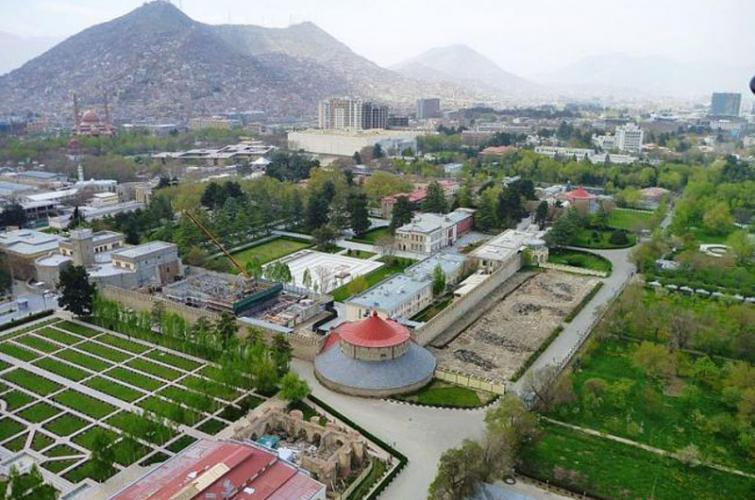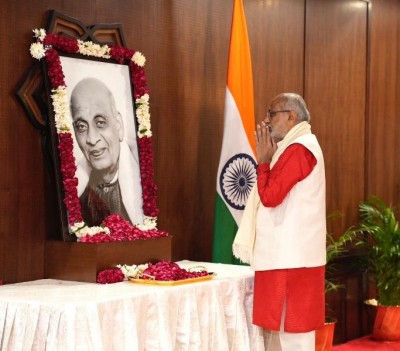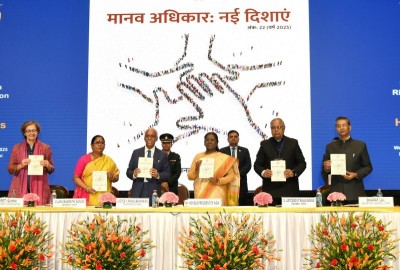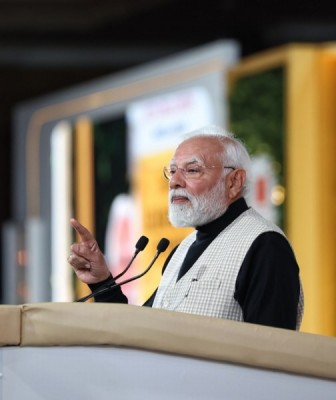
Road to Nowhere
On June 17, 2020, at least 10 Police personnel were killed when Taliban militants aggressively attacked their checkpoints in the Shurabak District of Kandahar Province.
On June 17, 2020, seven Police personnel were killed in a Taliban attack in Pul-e-Khumri, capital of the Baghlan Province. Another five Police personnel were wounded in the attack.
On June 16, 2020, six Afghan soldiers were killed when Taliban militants attacked an Army post in the Bala Hisar area of Aqcha District in Jowzjan Province. Another three soldiers were injured in the incident.
On June 5, 2020, 15 Police personnel were killed in an ambush by the Taliban on the Zabul-Kandahar highway near the city of Qalat in Zabul Province.
On May 28, 2020, 14 members of the Afghan Border Force were killed in an attack by the Taliban in the Dand-e-Patan District of Paktia Province. Three members of the Border Force were also wounded in the attack.
On May 27, 2020, 10 Afghan forces’ personnel were killed and one was wounded after the Taliban attacked a security checkpoint in the Seyagerd District of Parwan Province.
According to partial data collated by the South Asia Terrorism Portal (SATP), after the three-day [May 24, 25, and 26] ceasefire announced by the Taliban, at least 93 Security Force (SF) personnel and five civilians have been killed across the country in attacks initiated by the Taliban (data till June 21, 2020).
In an unexpected move on May 23, 2020, the Taliban announced a three-day ceasefire with the Afghan Government on the occasion of Eid-ul-Fitr. A statement issued by the group’s spokesman Zabihullah Mujahid on Twitter confirmed that the Taliban would not stage any attack on ‘enemy’ forces, but would maintain the right to defend itself against potential threats.
In response, President Ashraf Ghani tweeted on May 24, 2020,
I welcome the ceasefire announcement by the Taliban. The Afghan government extends the offer of peace. As Commander in Chief I have instructed ANDSF [Afghan National Defence Security Forces] to comply with the three-day truce and to defend only if attacked. Further details will be given in my speech tomorrow morning… As a responsible government, we want to take one further step besides declaring a ceasefire; we will expedite the release process of the Taliban prisoners
Later in the day, Sediq Sediqqi, the spokesperson for the President, tweeted,
Pres. Ghani today initiated a process to release up to 2000 Taliban prisoners as a goodwill gesture in response to the Taliban's announcement of a ceasefire during Eid. The AFG [Afghanistan] Gov is extending the offer of peace and is taking further steps to ensure success of the peace process.
Since then the Afghanistan has released 1,700 Taliban prisoners and a total of 3,000 since the signing of the US-Taliban agreement on February 29, 2020, in Doha, Qatar. The release of prisoners is part of the agreement. Under the US-Taliban agreement, 5,000 Taliban prisoners will be released from the Afghan Government’s jails and Taliban will release 1,000 Government prisoners. Taliban has so far released 571 prisoners.
The three-day ceasefire observed by both the Afghan Government and the Taliban for Eid-ul-Fitr came to an end at midnight of May 26, 2020, with neither the Government in Kabul nor the Taliban announcing an extension. Neither side officially made a statement to end the ceasefire as well, but developments on the ground have made it quite clear that the truce was over. That the Taliban was not interested in extending the ceasefire is obvious from the fact the Government did make several overtures. Javid Faisal, spokesman for the Afghan National Security Advisor (NSA), on May 26, 2020, the last day of the ceasefire, had appealed,
It is important to extend the ceasefire and, to avoid bloodshed; the Afghan government is ready to extend it.
Later on, May 28, 2020, he asserted,
The ceasefire is not over yet; there have been violations because it is a complicated technical process that requires good coordination between both sides.
This was the second ever ceasefire between the Government and the Taliban sides since 2001 when the latest round of war began in Afghanistan. Earlier, in June 2018, in response to President Ashraf Ghani’s unilateral announcement of ceasefire with the Taliban on June 7, 2018, the Taliban had directed all its fighters, on June 9, 2018, to cease all offensive operations against the domestic opposition forces during the first, second and third day of Eid [June 15, 16, 17]. However, that ceasefire was also short-lived as Taliban declared its end on June 17, 2018, despite the Ghani Government's announcement, on June 16, 2018, of a 10-day extension of the ceasefire, i.e. till June 29, 2018.
Despite the end of ceasefire, Abdullah Abdullah, head of the High Council for National Reconciliation, who assumed office on May 17, 2020, asserted on May 30, that he remained hopeful about the current opportunity for peace, which he said had been created due to the ceasefire. Similarly, Najia Anwari, a spokeswoman for the State Ministry on Peace Affairs on June 6, 2020, stated, “The Government is trying to coordinate on the venue for the talks so that these talks are started in the near future.” Presidential spokesman Sediq Sediqqi reiterated, on June 7, 2020, “The Afghan Government has taken important steps in this process. The negotiation team of the Afghan Government is ready to enter the talks and we have a strong national consensus for the peace process.”
However, Sirajuddin Haqqani, Deputy Chief of the Taliban, in a message to mark the completion of training of a group of Taliban suicide bombers at an unknown location, on June 3, 2020, declared that, despite the group's belief in the peace negotiations as one of the core components of the solution to the conflict in Afghanistan, the Taliban would still continue on the path of jihad (holy war) and strengthen its military power. In his message to the Taliban fightersm Haqqani asserted,
We believe that the talks are the solution, the politics of sharia (Islamic) law is one of the paths of our jihad and struggle, but no one should miscalculate our politics and willingness for talks - they shouldn't expect (the Taliban) to abandon jihad and their military capabilities.
According to the Afghan National Security Council (NSC), after the US-Taliban agreement, the Taliban has carried out an average of 55 attacks a day since March 1, 2020, a spike that has doubled casualties among Afghan security forces in some parts of the country. After the Eid-ul-Fitr ceasefire, sources within the Afghan Government disclosed, on June 4, 2020, that the Taliban initiated on average 30 attacks on the Afghan security forces each day. The Taliban is also dominating wider areas than it did earlier. According to the last official data available from the of Resolute Support Mission (RSM), as on October 22, 2018, at least 50 Districts were under Taliban control or influence. RSM has stopped publishing data since. According to the Long War Journal, however, the Taliban is now in control of 75 Districts out of a total of 398 in the country. There is clear evidence that the Taliban is making all efforts to gain more control on the ground, to increase its bargaining power.
Meanwhile, a quarterly report by the US Department of Defence to US Congress, issued on May 19, 2020, noted,
Pakistan continues to harbour the Taliban and associated militant groups in Pakistan, such as the Haqqani Network, which maintains the ability to conduct attacks against Afghan interests. Pakistan likely views increased Taliban influence in Afghanistan as supporting its overall objectives and will seek to influence intra-Afghan peace talks in a direction favorable to Pakistan.
Separately, the eleventh report of the Analytical Support and Sanctions Monitoring Team of the United Nations(UN) released on May 27, 2020, stated that the Taliban had failed to fulfil one of the core parts of the US-Taliban agreement, namely that it would break ties with Al-Qaeda. Al-Qaeda has 400 to 600 operatives active in 12 Afghan Provinces, and is running training camps in the east of the country, according to the report.
There are also reports of a new breakaway Afghan Taliban faction, Hezb-e-Walayat-e-Islami (Party of Islamic Guardianship), that has close ties to neighbouring Iran and opposes efforts aimed at ending the war in Afghanistan has emerged. It is believed to have split from the mainstream Taliban soon after the US-Taliban agreement in February 2020. The formation of the splinter group underlines the possibility of multiple divisions within the Taliban. There are several Taliban leaders, fronts, and commanders who oppose peace and are linked to Iran. Among them, is Sirajuddin Haqqani, the deputy leader of the Taliban and the head of the Haqqani network. Other Iran-linked Taliban leaders who oppose peace efforts include Mullah Qayum Zakir, a powerful battlefield commander and the former military chief of the Taliban until 2014. Mullah Zakir has the backing of hard-line field commanders.
The ongoing efforts to end bloodshed in Afghanistan through the peace-processes, and the latest US-Taliban agreement have little possibility of success unless they engineer the transfer of power to the Taliban in Kabul. It is unlikely that any other solution would be acceptable to the Taliban. Lasting peace in Afghanistan remains a distant prospect.
Support Our Journalism
We cannot do without you.. your contribution supports unbiased journalism
IBNS is not driven by any ism- not wokeism, not racism, not skewed secularism, not hyper right-wing or left liberal ideals, nor by any hardline religious beliefs or hyper nationalism. We want to serve you good old objective news, as they are. We do not judge or preach. We let people decide for themselves. We only try to present factual and well-sourced news.







